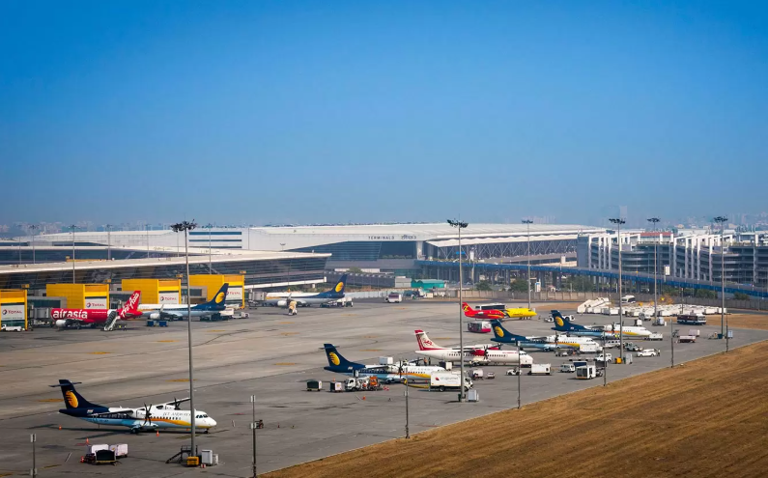
The ongoing construction work on one of the runways at Delhi’s Indira Gandhi International (IGI) Airport, which has caused severe flight delays and operational disruptions over the past two weeks, is set to be halted. The Civil Aviation Ministry is expected to soon issue a formal directive to suspend the ongoing work on Runway 28/10. The decision follows a recent advisory committee meeting where a consensus was reached on the need for a temporary pause due to the scheduling chaos at the airport.
The runway closure, which began on April 8, was initially planned to upgrade the Instrument Landing System (ILS) to CAT III B standards. The upgrade aims to improve operations in low-visibility conditions, commonly experienced during Delhi’s foggy winters. However, the closure has significantly impacted flight operations, with delays of up to an hour and a reduction in the number of arrivals. With the runway shut for upgrades, the airport has been operating with limited capacity, handling only 36 arrivals per hour compared to the usual 46.
The decision to pause the work comes after the advisory committee, which includes representatives from the Delhi International Airport Ltd (DIAL), Airports Authority of India (AAI), the Directorate General of Civil Aviation (DGCA), and various airlines, agreed that the disruption had become untenable. The suspension of work is expected to be implemented within the next 10 to 12 days and may resume after the peak summer travel period, in the third week of June.
In addition to delays, the runway closure has raised concerns about gaps in India’s aviation ecosystem, particularly regarding the absence of a regulatory mechanism that mandates necessary adjustments during planned infrastructure work at critical airports like IGI. Despite being informed well in advance, airlines did not adjust their schedules to accommodate the closure, exacerbating the operational chaos. The airport operator, DIAL, can only inform airlines but lacks the authority to mandate schedule changes, which has contributed to the issue.
Aviation safety experts have called for better planning and coordination among all stakeholders to prevent such disruptions in the future. Mohan Ranganathan, an aviation safety expert, stated that the runway closure was planned for four to five months, which was ample time for airlines to adjust their operations. He also suggested that the DGCA, as the regulatory authority, should have revisited the summer flight schedule and made necessary revisions.
The closure and its repercussions have also caught the attention of the parliamentary standing committee on transport, tourism, and culture, which discussed the ripple effect on India’s aviation network. Officials are now exploring ways to expedite the completion of other related work, including the runway lighting system, to make runway 10 available for operations sooner.
As of now, the runway closure is expected to be suspended temporarily to reduce the operational strain during the peak travel season. However, once the suspension is lifted, the runway upgrade is slated to continue for the next few months, with efforts to complete it before the monsoon season.
Sources By Agencies

